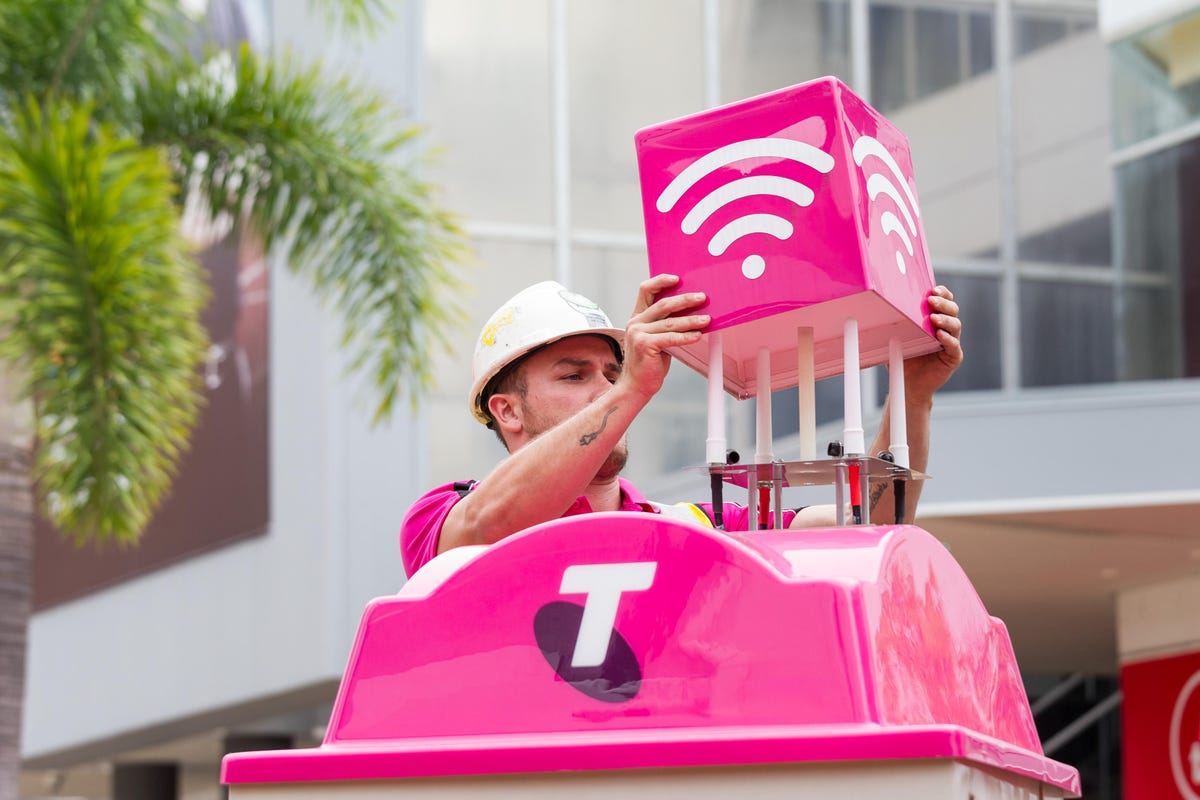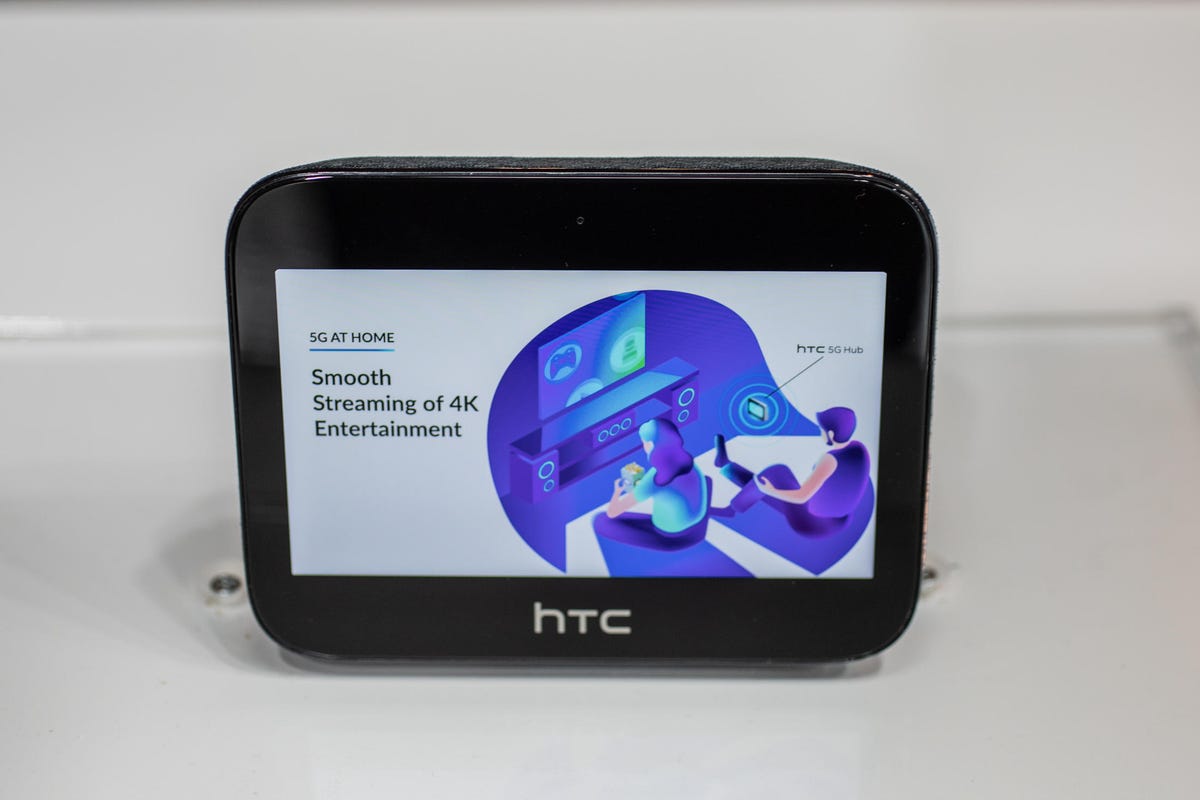Need to stay connected while traveling? Here’s how to find free Wi-Fi




Wherever you travel this summer, you probably won’t be able to stay offline for too long. After all, you’ve got friends and family to keep in touch with, restaurants and other destinations to explore, and your favorite shows to stream. And how can you keep up with your favorite Olympic events without a reliable internet connection?
So what happens when you’re on the road, far away from your home Wi-Fi? Or what if your home internet isn’t that fast to begin with?

In this guide, we’ll briefly explain how to get online quickly with a hotspot and how to find free Wi-Fi around the world. (You’ll also learn how to tell if your Wi-Fi is slow due to internet throttling, how to speed up your Wi-Fi, and our picks for the best VPNs.)
What is a hotspot?
A hotspot is a central location or device that provides wireless access to the Internet, and any networked device can connect to it, provided it has the appropriate access. Depending on your mobile carrier and plan, you may be able to use your smartphone as a hotspot.
There are two different types of hotspots: public and private.
In the above scenario, where you have paid your mobile provider for the ability to create a hotspot with your smartphone, the smartphone is the physical device that creates wireless access for other Wi-Fi devices, such as laptops, desktop computers, and streaming devices. This is an example of a private hotspot.
A public hotspot is usually created by a business to provide internet service when visitors, customers, and clients are on site. Many free, public Wi-Fi connections are hotspots. However, for the sake of accuracy, it is important to note the difference between standard Wi-Fi and a hotspot.
What is the difference between Wi-Fi and a hotspot?
While hotspots are physical locations or devices, Wi-Fi is a wireless technology that devices can use to send information to each other. If you have Wi-Fi at home, it’s because you have a Wi-Fi router that manages all of your wireless gadgets, and an internet service provider that connects that router to the internet.
As long as you set a strong password, a private Wi-Fi network like that is more secure than a public hotspot, since you control who and what connects to it. Public hotspots, on the other hand, are accessible to anyone within range, so it’s a good idea to use a VPN or some other security measure if you need to do something sensitive, like shopping or sending money.

A hotspot is a central location or device that provides wireless access to the Internet.
How do you find free wifi or free public hotspots?
While this probably isn’t possible if you’re at home (unless you live very close to someone who has an unsecured network), there are usually plenty of opportunities to find free WiFi or public hotspots at businesses like coffee shops, parks, libraries, hotels, restaurants, gyms, and more.
If you’re planning to go out for the day in search of free internet, here are some handy apps to try:
Apps like these show a map of your area or a list of free public Wi-Fi or hotspots that are available. Most also let you keep track of login requirements and hotspot ratings.
In some places, such as libraries, public Wi-Fi is usually free. However, if you don’t use a Wi-Fi finder app, it’s a good idea to call first to be sure.
How to set up and use free Wi-Fi
Make sure the device you want to use is Wi-Fi compatible. If so, make sure Wi-Fi is turned on.
Once you arrive at the location where you want to use the public wifi or hotspot, open a browser and then open your computer’s network settings or click on the wifi icon on your screen. Then select the public wifi connection you want to use. If the connection is public, you are now connected, but wait for an opt-in site to appear in your browser. Some companies require you to agree to their terms of service or provide an email address before they will let you use their free wifi.
Some businesses give their customers a login and password and offer a secure network. If the connection you want to use is listed as secure, look around for the login and password posted at the business or ask someone for help. And yes, if you are somewhere like a coffee shop, it is polite to buy a pastry or a latte while you are there.
If you have set your computer to automatically connect to available networks, the next time you visit that store, it will automatically connect to the network.

This hotspot device from HTC uses an incoming 5G connection to provide Wi-Fi internet access to nearby wireless devices.
How to set up and use a private hotspot
They’re not free, but if you need an internet connection at home and have a good mobile signal, a paid hotspot might be a place to go. For example, maybe you live in a rural area with limited ISP options, or maybe the internet plans in your area are all out of your budget.
Depending on your mobile carrier and the plan you pay for, you may already have personal hotspot capabilities. If not, contact your carrier to find out how much they will charge you for that option. Be prepared to pay more if you want unlimited data.
After considering the price, you’ll need to decide whether you want to use your smartphone as a hotspot or purchase a dedicated Wi-Fi hotspot device.
Check the hotspot capabilities in your phone’s settings.
Should I use my smartphone or a separate hotspot device?
A hotspot device is considered a separate device on your mobile plan with its own separate data allowance. The downside is the added cost, but the upside is that you don’t have to worry about your smartphone usage eating up your hotspot data. Another benefit: As long as you set a strong password, using a hotspot device to get online is just as secure as any ISP-provided Wi-Fi connection, and it often provides greater range coverage. We’re also seeing a growing number of full-fledged Wi-Fi routers and mesh routers that are designed to get their incoming signal through a cellular connection, such as LTE or 5G.
Both smartphone hotspots and dedicated hotspot devices can be used anywhere. However, it can be more convenient to use a smartphone hotspot in public places, especially if you only want to be online with your laptop for a few minutes.
What WiFi options does my internet provider offer?
In response to the pandemic, the Federal Communications Commission has Keep Americans Connected initiative to help people keep their broadband and phone connections in 2020. In addition, providers such as Comcast, Communication Charter And Altice VS extended free wifi for everyone (customers and non-customers). Some of these programs are no longer active in these post-pandemic times, but it is still worth checking with your local ISP.
What is the end result?
Whichever route you choose, you probably have more ways to get online than you realise. If you’re still struggling to find free Wi-Fi when you travel, it’s worth checking with providers in your area to see what your options are. Hopefully, this guide will help you find and use them.
For more information, check out our tested picks for the best WiFi routers and how to tell if your router is in the wrong place.
Find Free WiFi FAQs
What is the difference between Wi-Fi and a hotspot?
Hotspots are a physical location or device that provides wireless access to the internet. Wi-Fi, on the other hand, is a wireless technology that devices can use to send information to each other. In most cases, Wi-Fi is accompanied by a Wi-Fi router and an internet service provider that connects all of your devices to the internet.
Where can you find free Wi-Fi?
There are many ways to find free Wi-Fi. First, it is essential to know the difference between a public and a private hotspot. Private hotspots are not free. The good news is that most public establishments, such as businesses, coffee shops, parks, libraries, hotels, and restaurants, usually offer free public hotspots. Certain apps such as Instabridge can help you find free Wi-Fi hotspots near you.
Are private networks more secure than public hotspots?
Yes. Public hotspots are accessible to anyone within range, which means you are more susceptible to hackers stealing your personal information or other risks. It is a good idea to use a VPN as an extra layer of protection when using public Wi-Fi.




